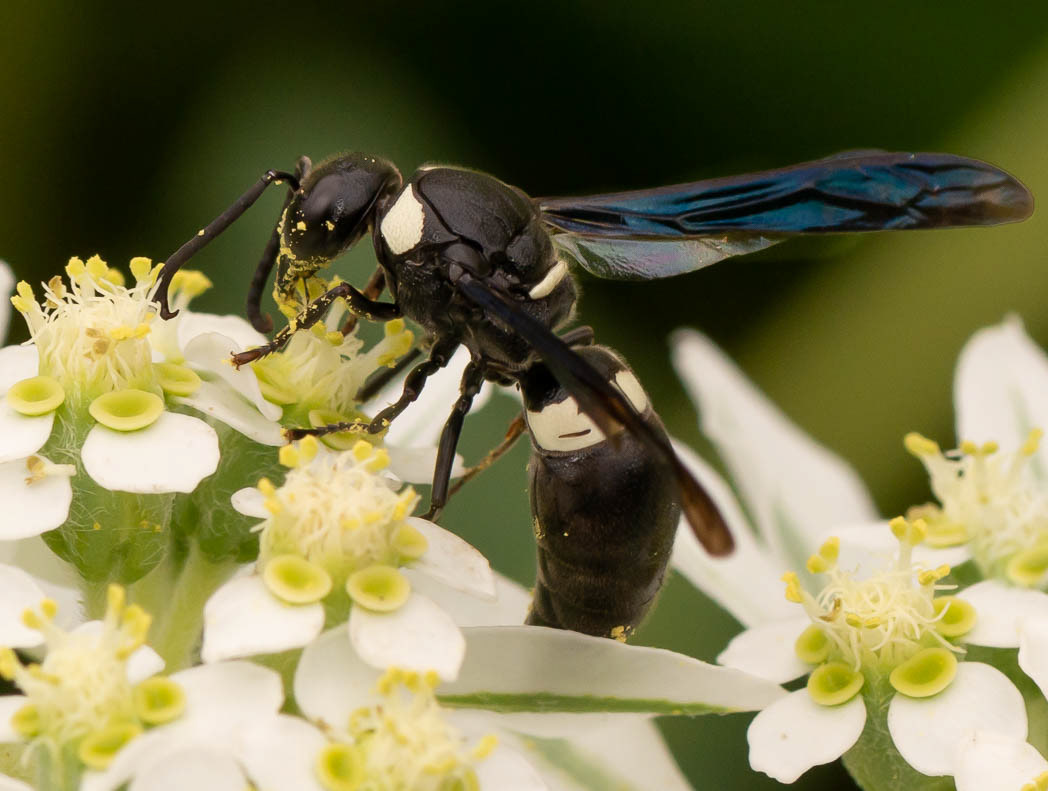
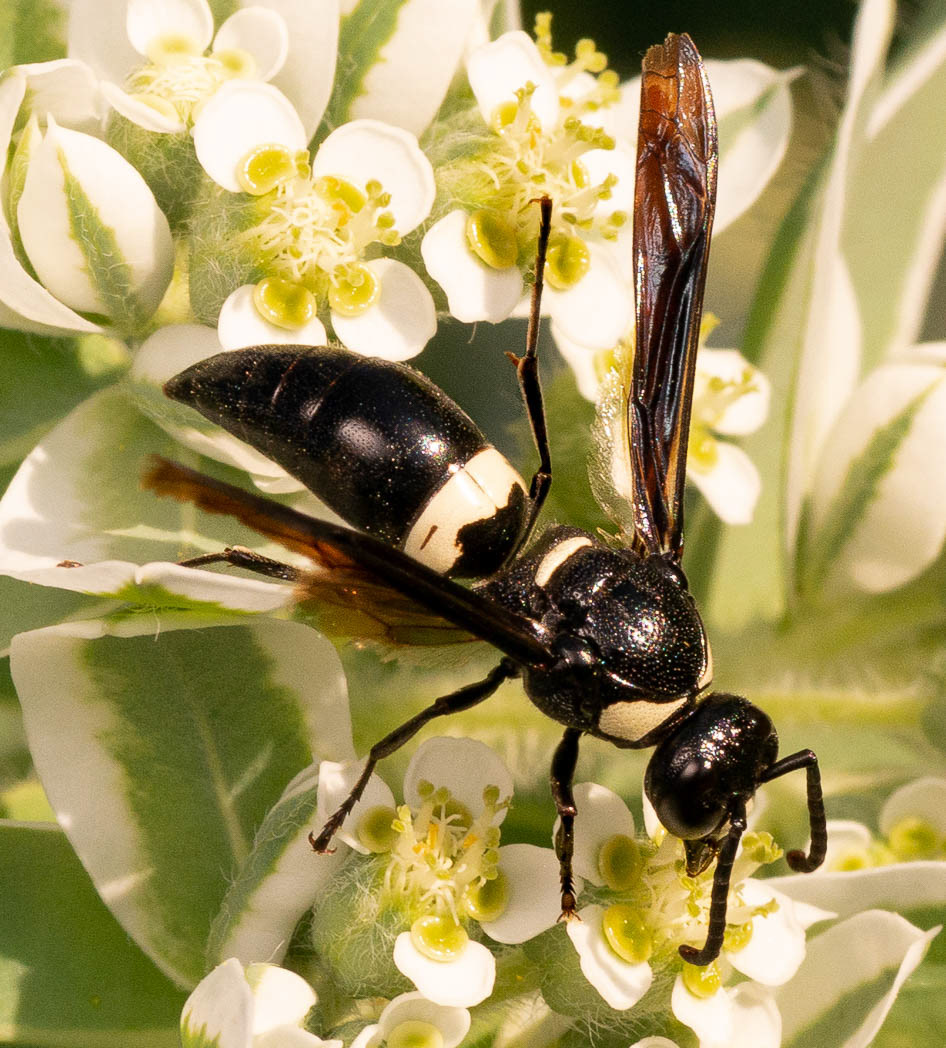
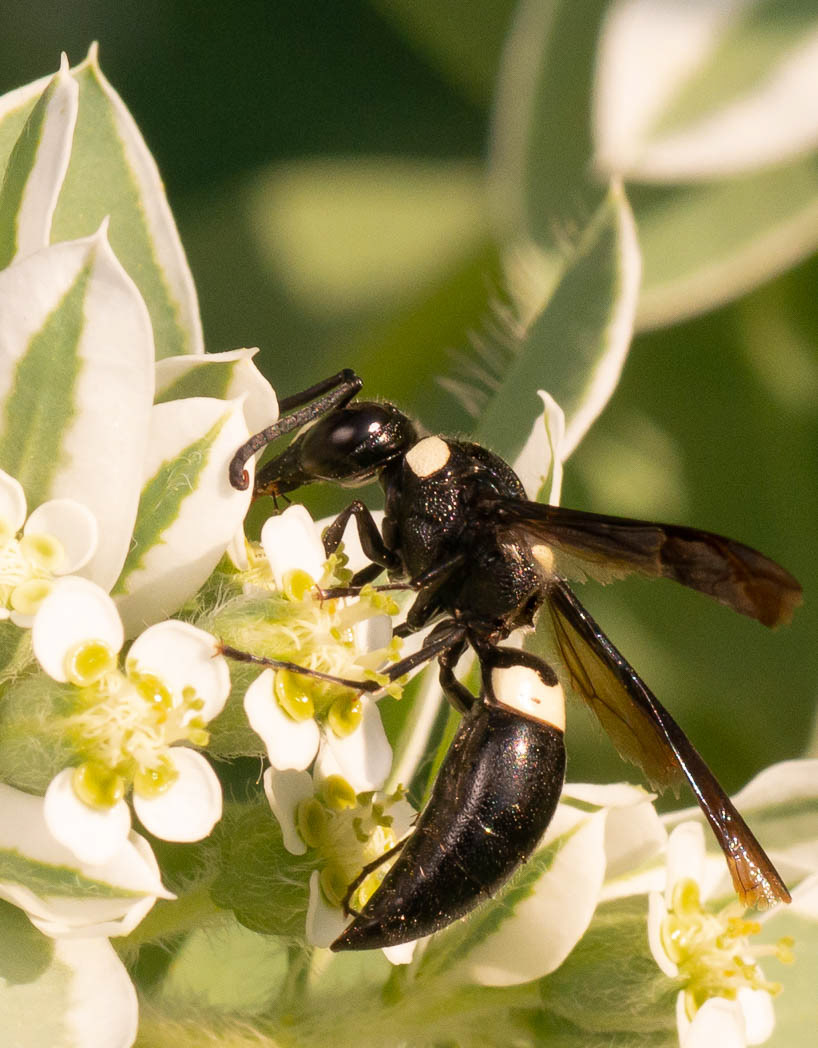
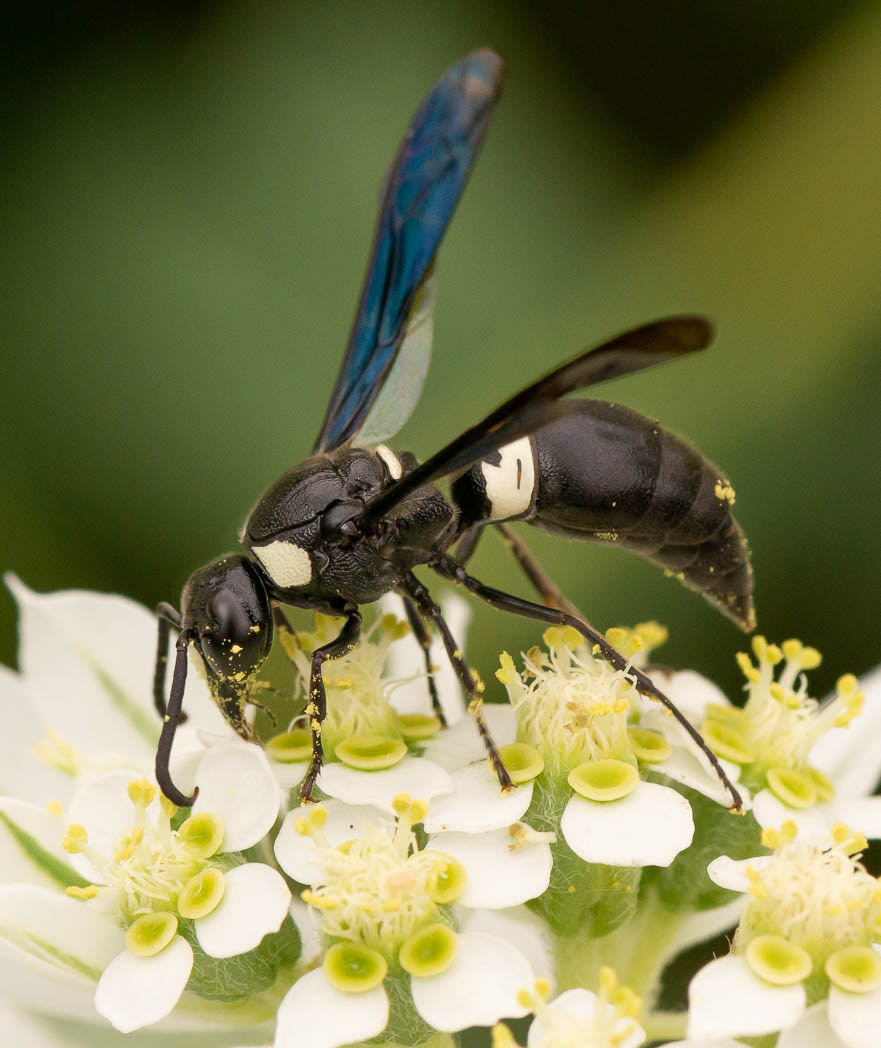
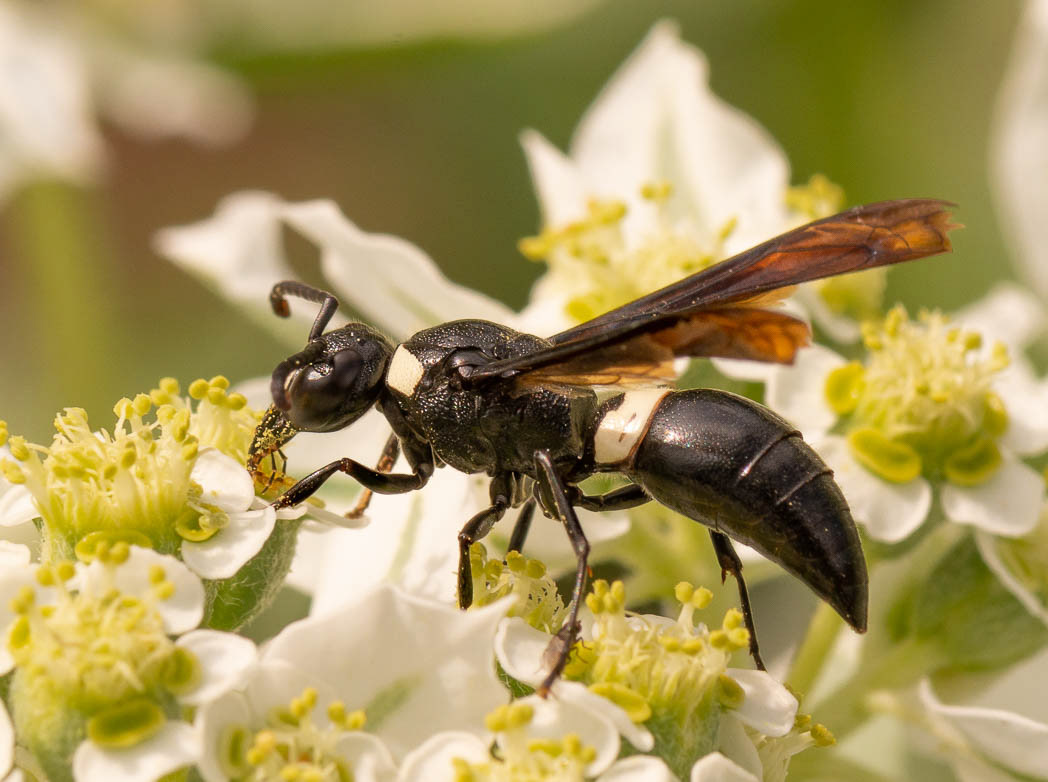
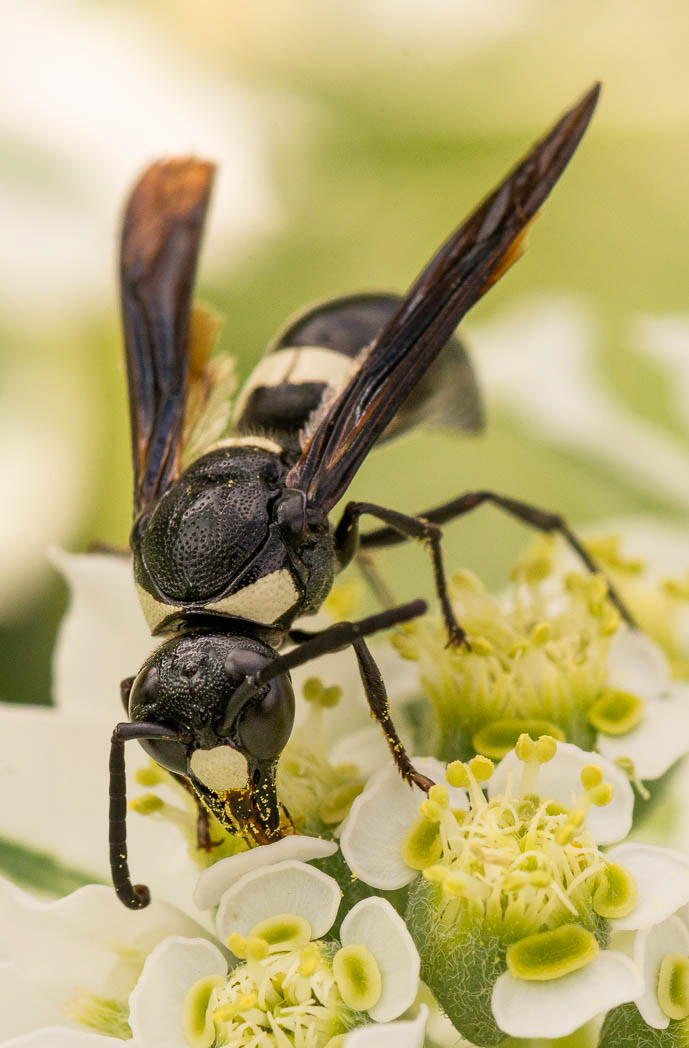
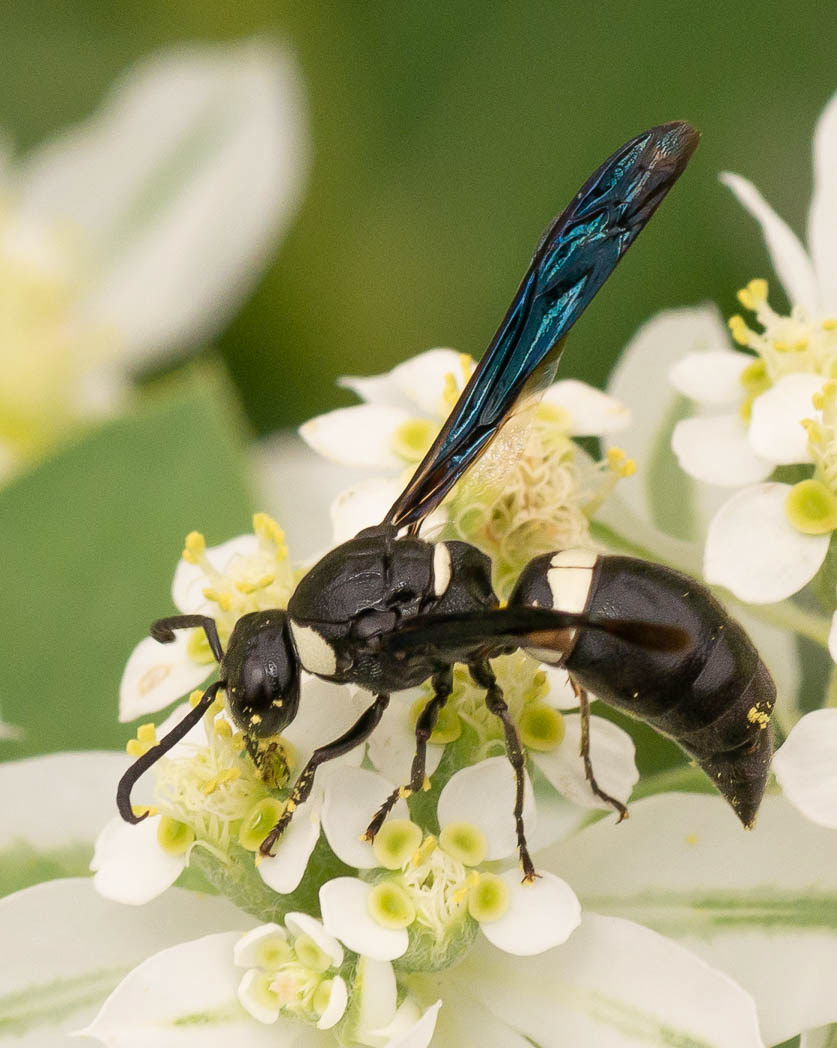
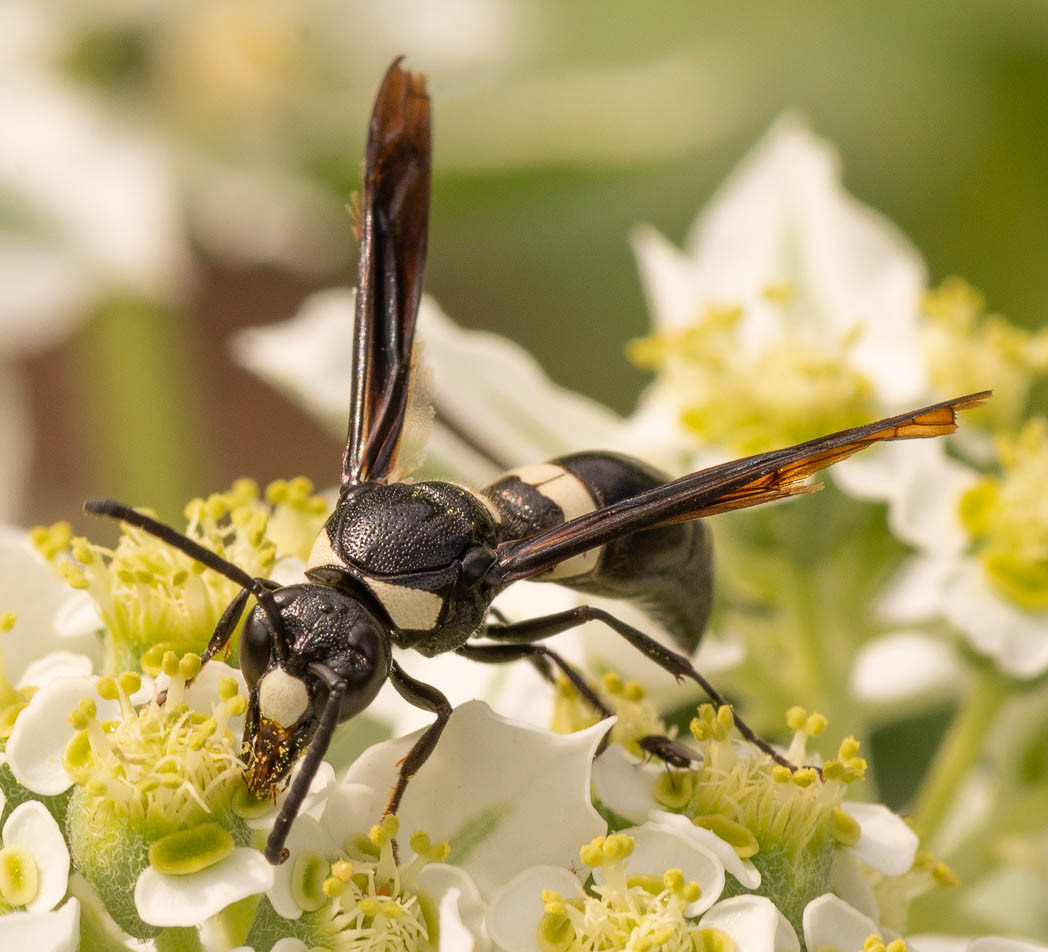
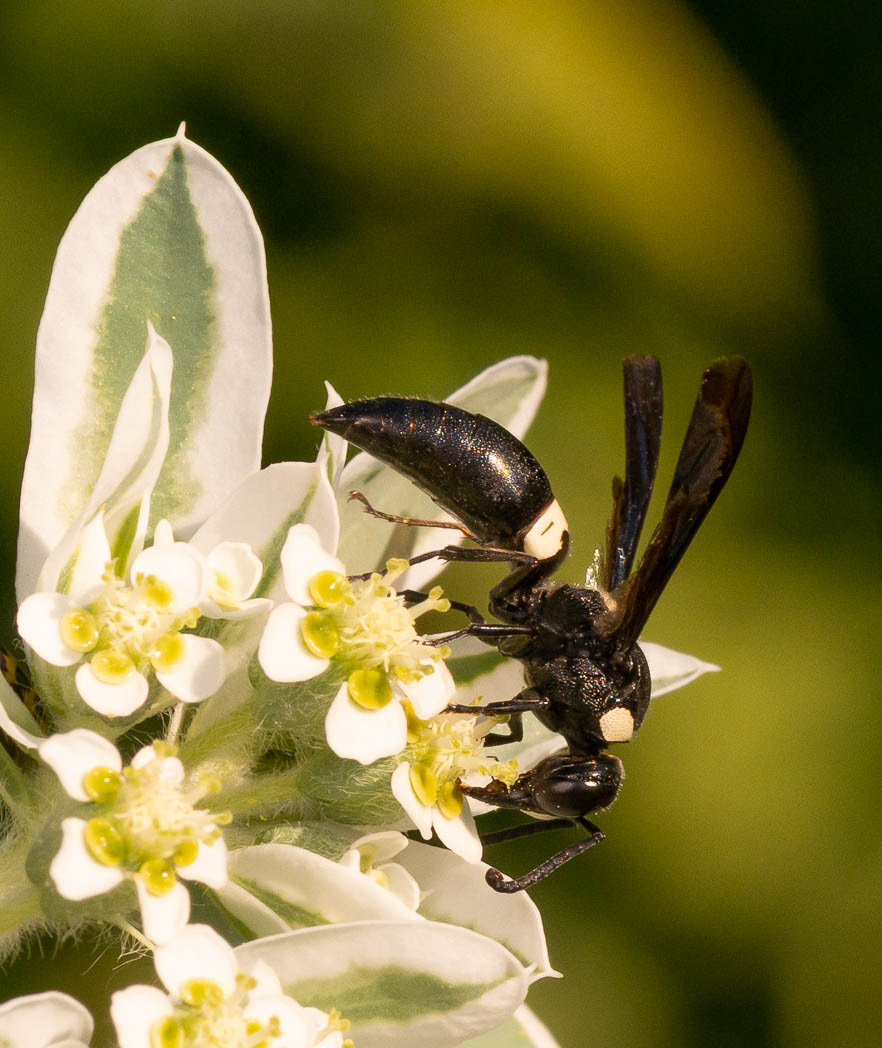
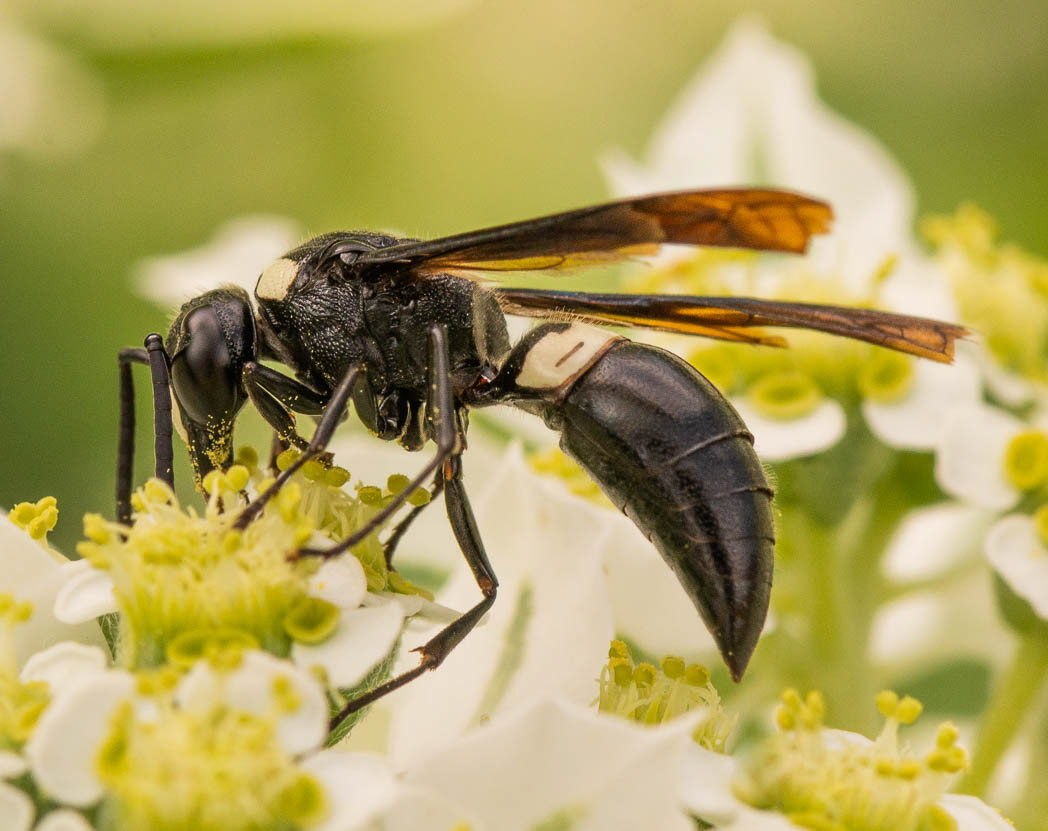
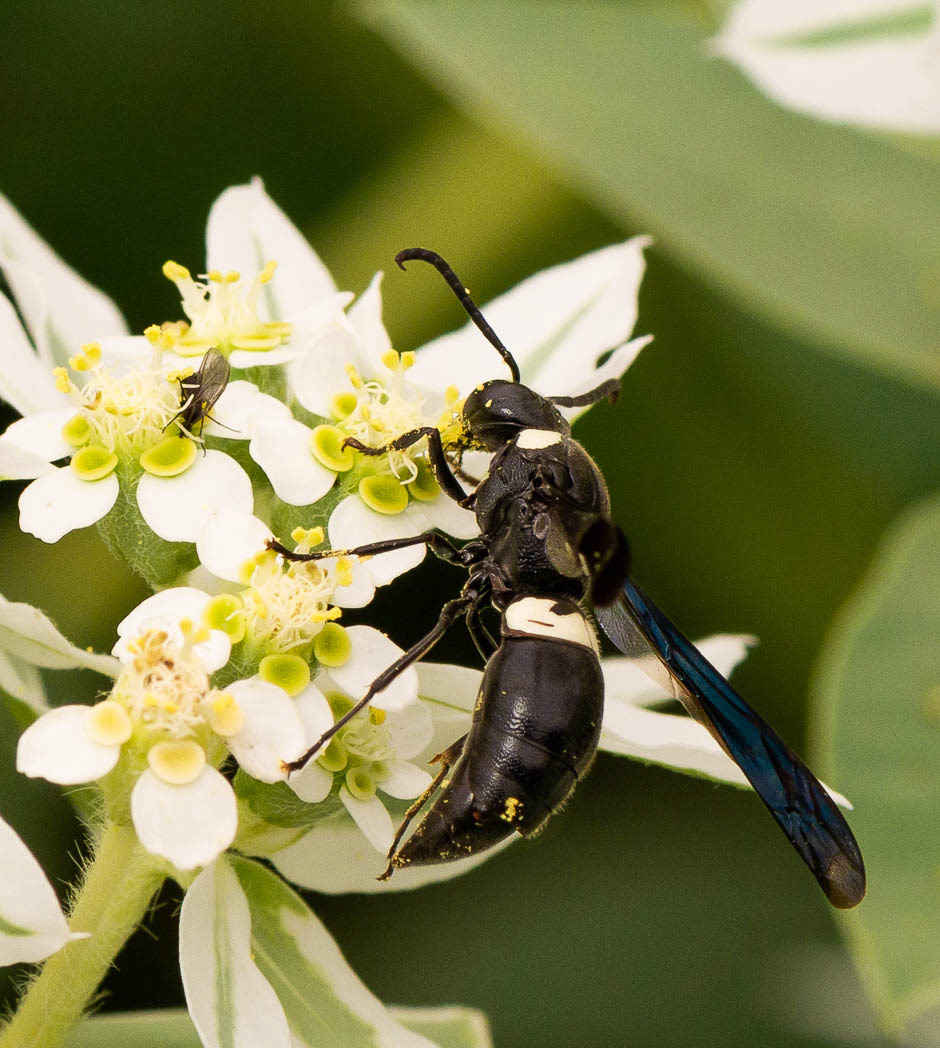
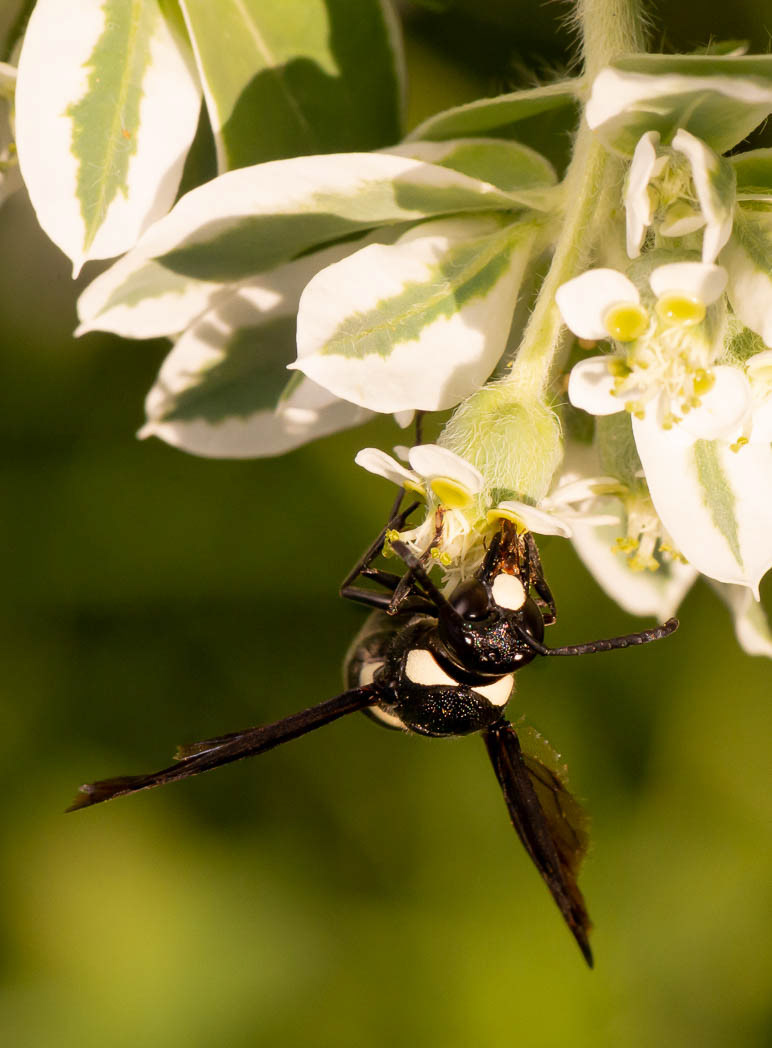
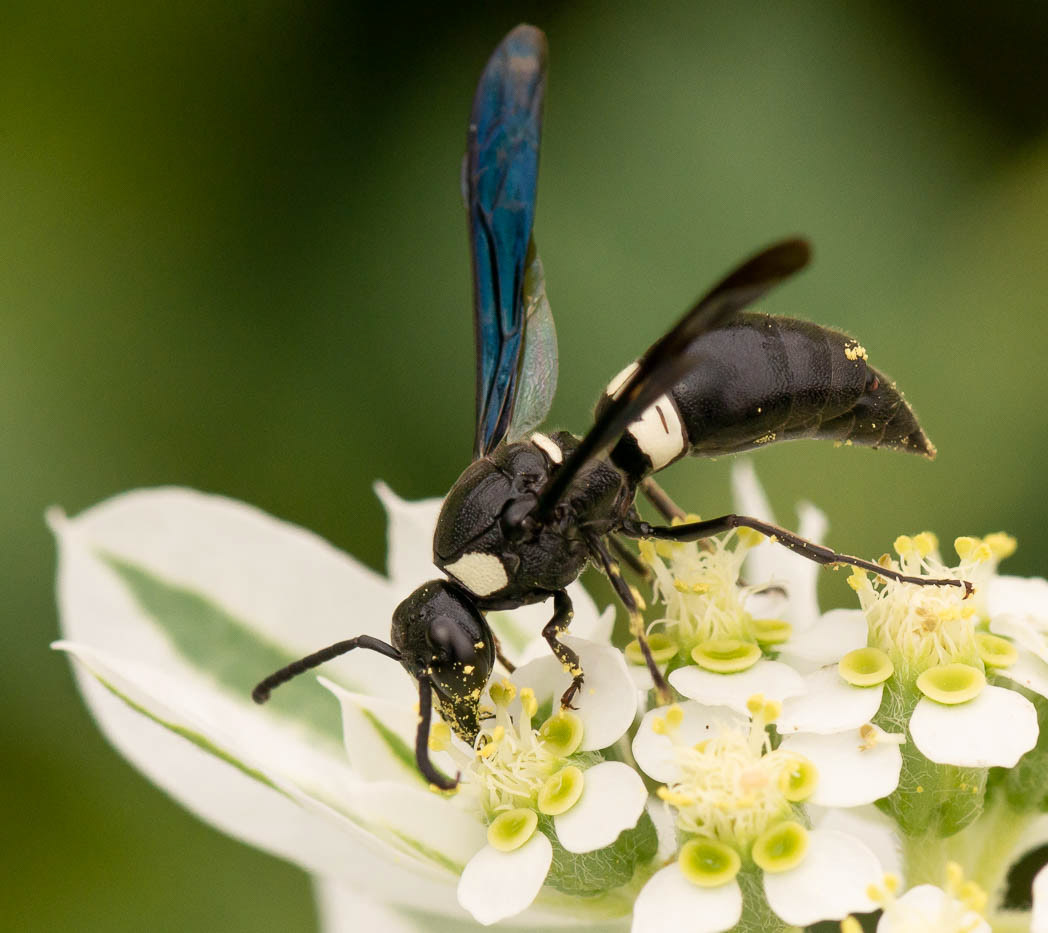
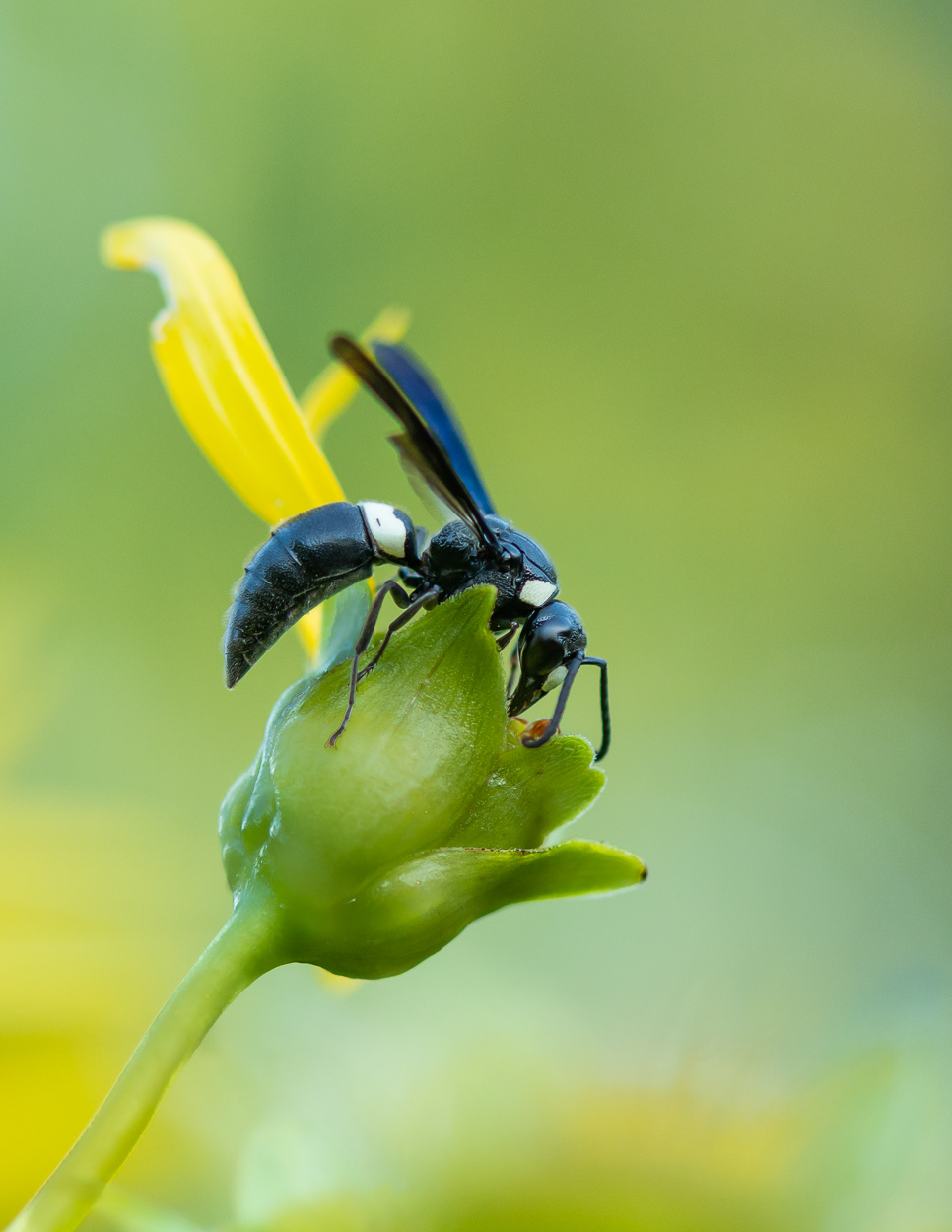
The Four-Toothed Mason Wasp (Monobia Quadridens), a solitary wasp, likes to use unoccupied holes or nesting chambers made by various other insects, or she will make her own tunnel in dirt or wood. She has also been observed evicting residents of an occupied chamber. The female fills the chamber with one of her eggs and multiple (sometimes approaching 20) caterpillars that she has paralyzed to sustain the larva. She can decide whether to lay a male or a female egg, and she lays the male egg closer to the entrance because it matures sooner. She seals the entrance with mud, leaves an air space, and seals it again. Naturalists are not sure why, but it might be to provide insulation or to fool would be parasites. Wintering is hard on the larvae because they do not make a cocoon. The female lays about 20 eggs, and there are two generations per year at least in their southern range. While the female can sting, the male can only stab, but this wasp is not aggressive and seldom stings people. However, at first glance it does look a lot like the Bald-Faced Hornet, which is a colony (social) wasp that can be aggressive. The Four-Toothed Mason Wasp has a white band at the upper end of the abdomen, while the Bald-Faced Hornet has white bands near the stinger. These wasps are beneficial to gardeners for the caterpillars they consume and as pollinators because the adults eat nectar and pollen.













